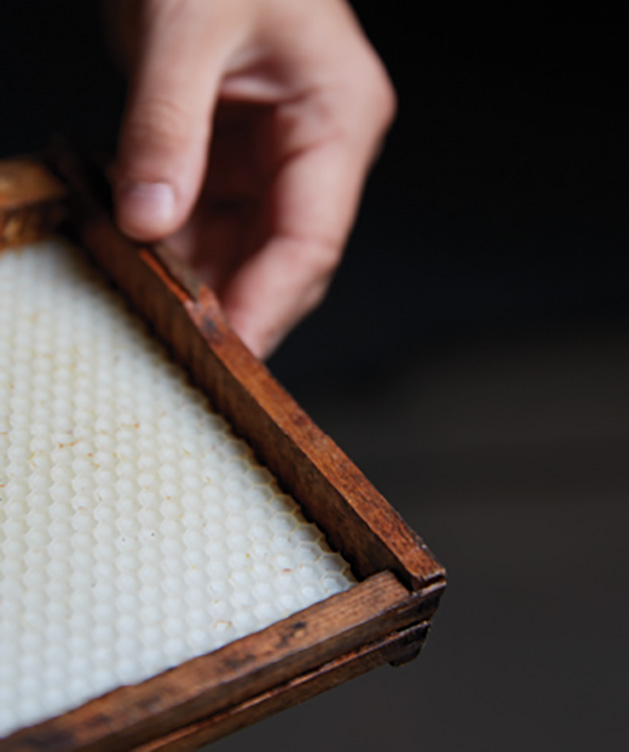
This article originally appeared as part of the story Give Bees A Chance in the March 2019 issue.
Donning a bee beard is a bold way to persuade the public that honeybees are their friends.
That’s what the University of Minnesota Bee Lab has been doing since 1999 at the fair with its bee beard show. It takes place at the bee and honey display in the Agriculture Horticulture Building, usually at 1 p.m. on the lone Wednesday of the fair.
Gary Reuter, an apiculture technician with the bee lab, readies the bees to put on a student or staff member in a cage, safely away from onlookers. The queen bee from a hive provided by the bee lab is put on the subject’s neck, causing the other bees to swarm on that person’s lower face, forming the bee beard.
What makes it work? “People, in general, think the bees are going to come out and sting them,” Reuter says. “That’s not how it works. What we’re working on is an instinct, a behavior that bees have which is called swarming.”
When honeybees want to reproduce, the queen bee and about half the bees in the colony find a new home, forming a bee swarm. “During that swarming period, bees do not have a home to protect,” says Reuter. “And they’re not as prone to stinging because their main reason for stinging someone is to protect themselves or their nest. They don’t have a nest, so they’re pretty calm.”
For more information, visit Reuter’s website.









